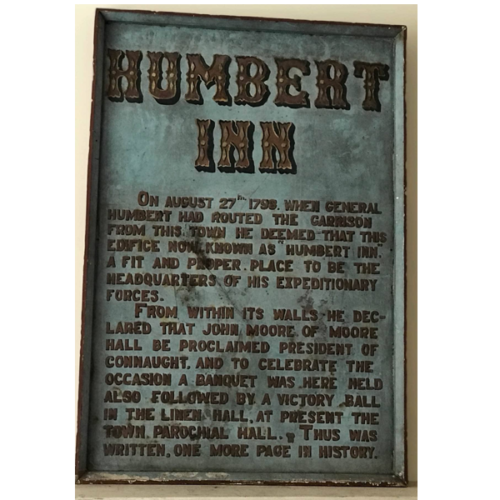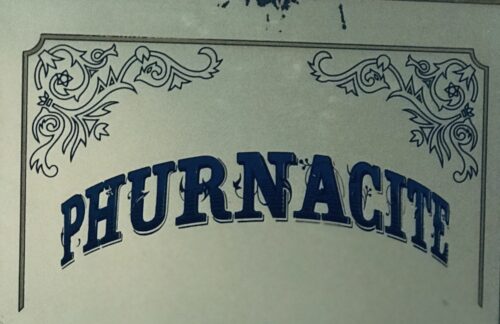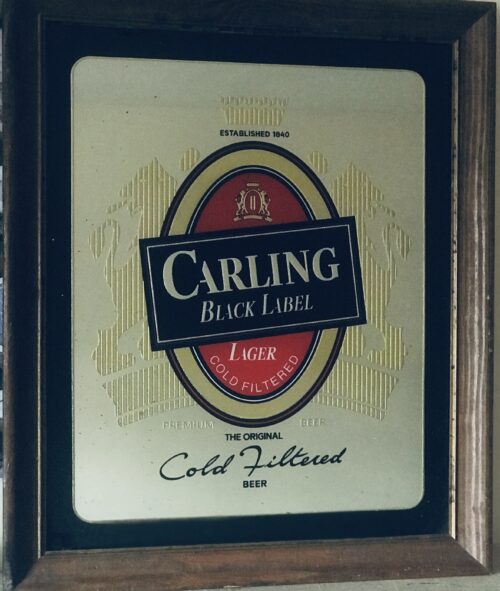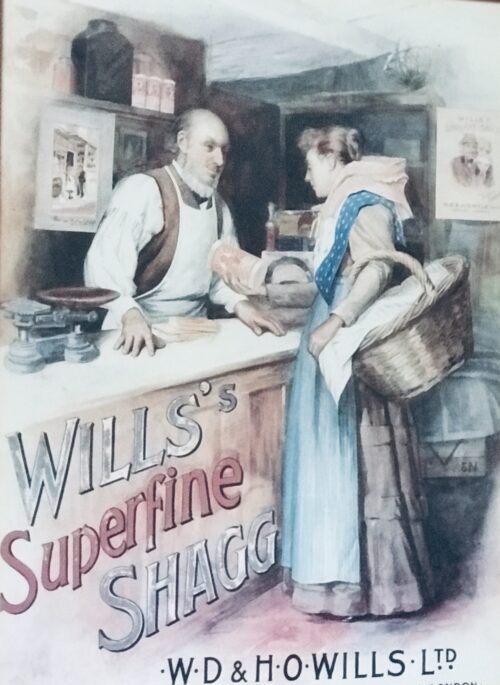Enniscrone Co Sligo 45.5cm x 68.5cm
Famous print of painting by Richard Moynan titled "Military Manoeuvres" which now resides in the National Gallery in Dublin.
The Dublin-born painter Richard Moynan was 24 years old at the commencement of his artistic training. He was educated with a view to entering the medical profession and proceeded so far on the course to need only his final examination to qualify, but his artistic instincts proved to be too strong to be resisted, and he abandoned the profession of medicine for that of art, and made it his life long study. (The Irish Times, 11 April 1906, p. 5.)
Moynan entered the Dublin Metropolitan School of Art (DMSA) in January 1880, having initially studied there on a part-time basis. Due to an Act of Parliament passed in 1877 the school came under the control of the Department of Science and Art of South Kensington, which aligned it with the British art education system. The headmaster, Robert Edwin Lyne, was a product of this education as he had received his instruction in the (British) National Training School prior to taking up his appointment in Dublin in 1863. In the DMSA, Moynan gained the requisite qualifications in 'Freehand, Geometry, Perspective and Object Drawing, 2nd grade' (Thoms, 1891, p. 833), which allowed him entry to the Royal Hibernian Academy Schools in 1882. The following July he was awarded the 'Albert Scholarship for the best picture shown in the Academy by a student' (Strickland, Vol II, 1913, p. 144). This enabled the artist to continue his studies in Académie Royale des Beaux Arts in Antwerp, moving on to Paris in 1885, where he honed his skills in portraiture at Académie Julian.
Moynan returned to his native Dublin in December 1886 to establish a practice as a portrait painter, but he also pursued his craft in terms of genre scenes, history painting and literary subjects. The painting, Military Manoeuvres (1891), marks a watershed in the artist's development. It demonstrates his art-making process and provides an insight into his political beliefs.

Military Manoeuvres was exhibited when Moynan was at the height of his powers. In July of the previous year he was elected to full membership of the Royal Hibernian Academy, which earned him the honour of being one of 30 constituent members of the most important professional Irish artistic institution. This radically changed the painter's studio practice. It allowed him to modify both the size and pricing structure of his paintings, as he was no longer obliged to submit his work for selection to the RHA jury. Therefore, from 1891 onward Moynan tended to focus on one expensively-priced, large-scale painting per year, as well as smaller auxiliary pieces to help sustain his income. The asking price of Military Manoeuvres was £210, an amount that far exceeded the price requested by his fellow exhibitors. However, it appears that the practice of RHA members seeking inflated prices for their work was not unknown:
It has often been observed by the public, though seldom ventured into print, that the resident artists of capacity demand exorbitant prices for their work and the fact is advanced as a reason why so few pictures are sold. (The Freeman's Journal, 24 March 1891, p. 5).
Military Manoeuvres illustrates a crowded street-scene depicting a group of children amusing themselves by pretending to be a regimental band. The title of the work is humorous and although Moynan shows the children's ragged dress, he focuses mainly on the boys’ ability to have fun. Their toys include saucepan lids as cymbals, an upturned bucket serving as a drum, a biscuit tin, a coffee pot, a paper trumpet, a penny whistle and a wooden sword. Their leader carries a broom and wears a splendid brass helmet, which contrasts with his general apparel. This helmet was obviously purloined nefariously from some source. This attracts the attention of a passing soldier who happens to recognize the elaborate headgear as being a black-plumed band helmet from his own regiment, the 4th (Royal Irish) Dragoon Guards. The trooper makes eye contact with the bandleader and steps threateningly towards him. The soldier’s lady-friend encourages him to see the funny side of the incident, while passers-by stop and stare.
The success of this piece lies primarily in two areas, the skill of the artist in challenging the viewer to interpret the story, and the excellent execution of the figure work. There are 15 children in the band, all individual in facial type and dress. Moynan’s sketchbooks in the National Gallery of Ireland demonstrate his commitment to grouping and regrouping his subjects as he explored different dynamics in an effort to achieve the most effective composition. He was an acute observer of human nature and although this picture contains over 30 figures, the scene appears to be naturalistic and spacious. The viewer’s eye-movement is guided by the interaction between the young 'drum-major' and the soldier, and is, in turn, reinforced by the anxious glances of the flower seller in the foreground.
This finely-painted genre scene reflects the artist's academic training. The detailed execution of the figures demonstrates the influence of the painter's RHA professor, Augustus Burke, while also showing a connection with French art practice as the cloudy sky exhibits a dull, even light made popular by the plein air painter Bastien Lepage. The scale of the work is significant as it measures 148 x 240 cm, a size that was considered to be more suitable for a history subject rather than a genre piece. The expansive scale was not without precedent, as two years earlier Aloysius O'Kelly exhibited The Station, Saying Mass in a Connemara Cabin in the R.H.A. exhibition. This work, measuring 152.5 x 178 cm is slightly smaller than Military Manoeuvres. O’Kelly’s quintessential Irish subject reflects the importance of Catholicism among the peasant population. Moynan was a keen observer of O'Kelly's work. He adapted the central motif for his award-winning painting The Last of the 24th at Isandula from an O'Kelly newspaper print entitled The State of Ireland, Affray at Belmullet, Co. Mayo, published in 1881 in The London Illustrated News. Moynan's Unionist politics differed radically from O'Kelly's Nationalism but, nevertheless, the size and the subject matter of The Station, Saying Mass in a Connemara Cabin must have struck a chord, as, two years after its appearance in the R.H.A exhibition, Moynan painted a large street scene which explored another important aspect of Irish life, the effect of the military in the every-day lives of the people.
Moynan's sketchbooks in the National Gallery of Ireland provide an insight into the artist's working methods and contribute to our knowledge of the process involved in the construction of his paintings. This invaluable collection of 9 sketchbooks was donated by Gordon Lambert in memory of his friend, the artist's daughter, Eileen Nora (known as Biddy). One of the chief characteristics of the artist's work is mise en scene, or the ability to present a composition with dramatic force, as if the characters were actors arranged under the proscenium arch. This was not simply a serendipitous occurrence, as the artist's sketchbooks reveal no less than 8 studies for Military Manoeuvres. These illustrate the painter's careful assembly of material, taking infinite pains in constructing a suitable streetscape, while also exploring several alternative arrangements of the figures within the composition. This approach demonstrates the methodology employed by a classically-trained artist, who painstakingly built up a picture by addressing compositional issues and architectural detail along with exploring different methods of conveying the narrative.
Most of the artist’s NGI sketchbooks are pocket-sized containing pencil slots suggesting their primary function was to capture ideas and poses. An analysis of the material relating specifically to Military Manoeuvres suggests that their chief thrust is generic, rather than specific. The artist employed the sketchbooks as a kind of manual camera, to record ideas as opposed to developing studies for specific figures. There are over 30 individuals depicted in Military Manoeuvres, each of whom is a distinct character. Moynan must have sketched and painted studies for all of these people, yet this type of detail is not present in the sketchbooks. Instead, they contain studies dealing mostly with compositional matters.

The artist's notebooks in the National Gallery provide two alternative compositions for Military Manoeuvres. Sketchbook no. 19.171, Folio 10 Verso shows a group of children marching in time to the beat of their instruments and sketchbook no. 19.175, Folio 9 recto, is essentially the same group of children, but, in this version, their leader holds a sword in his hand. It is interesting to note that the artist finally selected a passive, more psychological composition as opposed to the simpler, more action-packed version depicted in sketchbook no. 19.171, Folio 10 verso.
This dynamic sketch exudes motion as the band members march forward four-abreast, the tilt of their bodies and the movement of their feet suggesting rhythm and pace as they advance energetically towards the viewer. The theme of motion is reinforced by the presence of a soldier and his lady-friend, as they walk in step with the children's band. This rhythm is also expressed by Moynan's quick, slashing pencil-strokes as he loosely establishes the figures in the foreground, the soldier and the lady. Standing on the right of the composition, conducting the action is the young drum major. Once again he is wearing the elaborate brass, regimental helmet of the 4th (Royal Irish) Dragoon Guards, with its horsehair plume. His body is arched in counter-rhythm to the marching band and, at first glance, he appears to be halting the action. He waves both hands in the air; his left hand directing the music, while the tightly-gripped staff in his right hand confers almost regal authority. The attention of all members of the band is focused on his directions. The soldier looks directly ahead, while his companion curiously gesticulates towards the drum major. This composition differs enormously from the final painted version of Military Manoeuvres. It tells a much less complex story of the children's ability to find amusement by pretending to be an army band. Their enjoyment is infectious, as the soldier and his companion march along to the beat of the music. The children concentrate on their own pursuits and do not notice that their game has the added benefit of also entertaining the adults. There is no air of mystery about this piece. All parties in the picture are in harmony. The children do not tease the soldier, and there is no sign of the concerned-looking flower girl. In this version, the soldier is proud of his occupation and this sense of pride is endorsed by the children's games. The humour in the piece lies in the fact that, for a brief moment, it appears as if the trooper is an honorary member of the children's band, who has temporarily fallen under the command of the bandleader.
There is a freshness and sense of immediacy about this sketch that begs the question, was this perhaps an actual event that Moynan witnessed? The soldier has been identified as wearing the walking-out dress of the 4th (Royal Irish) Dragoon Guards, a regiment based in Newbridge between the late 1880s and 1893 under the command of General Sir Edward Cooper Hodge, K.B.E. Could the trooper have been visiting his home in Leixlip when he saw his young brother parading about the streets wearing his regimental band helmet? Moynan frequently worked in the Lucan/Leixilp area during the period when the Dragoon Guards were situated in Newbridge. The popularity of the spa at Lucan made it much favoured by 'visitors and invalids' (Thoms, 1891 p. 1310) as it was accessible by steam tramway which ran from Conyngham Road. The artist was a member of the Dublin Sketching Club who ventured on a field trip to the village of Lucan in the spring of 1889. His 1892 painting entitled, Old Mill - Leixlip, also suggests familiarity with the Leixlip area. Moynan's knowledge of Aloysius O'Kelly's Mass in a Connemara Cabin may have prompted him to consider the possibility of producing a large genre piece, reflecting Unionist rather than Nationalist values. The sketch he made in Leixlip village provided an excellent opportunity to explore the importance of the military within an Irish rural environment.
But the artist was dissatisfied with such a simplistic arrangement as found in sketchbook no. 19.171, Folio 10 Verso, as he wished to challenge the viewer to interpret the scene. In the final version of Military Manoeuvres, the children's band is far more intent on baiting the soldier than pursuing their games. The inclusion of the flower girl enables the artist to construct a moment of tension as she observes the expression of the soldier and awaits the interaction between the trooper and the bandleader. Moynan rejected the forward march of the musical band in favour of a more diffuse arrangement, as the triangular relationship between the flower girl, the Drum-Major and the soldier prompts inquiry into the reactions of the various groups within the canvas. Indeed, the painted version of Military Manoeuvres could in fact be the sequel to the sketchbook version. This shows the artist's ability to develop, not just the compositional elements within the painting, but to modify the idea behind the narrative to produce a more engaging story line.
Opinion has long been divided on the setting for Military Manoeuvres. At first glance, the streetscape mirrors that of Main Street in the village of Leixlip, Co. Kildare but certain details do not support this theory. Dr. Brian P. Kennedy's careful comparison with the near-contemporary Lawrence photograph establishes broad parallels between the photographic and the painted version, but it is difficult to reconcile certain details. This is precisely because of Moynan's approach to formulating a composition was creative rather than topographical. He had no difficulty in relocating solid architectural features in an effort to gain balance and symmetry. Kennedy remarks that the church spire is the result of 'artistic license' (Kennedy, 1993, p. 28). This is true on two counts. The church of St. Mary's is situated on the left side of the road as one proceeds up Main Street, Leixlip, in the direction of Pound Street. Furthermore, St. Mary's does not have a conventional spire but terminates in a castellated Norman-style tower. Reference to the artist’s sketchbooks reveals that the spire featured in Military Manoeuvres was 'borrowed' from the church of St. Andrew in the nearby village of Lucan. This distinctive architectural gem obviously attracted the artist, as he sketched it from no less than three different angles. Therefore, Moynan sacrificed architectural accuracy in his quest for a perfectly balanced composition.
It is also possible that the presence of the spire in Military Manoeuvres had another, more personal significance for the artist, as a spire, or an obelisk, is emblematic of the craft of Freemasonry. By including the spire in Military Manoeuvres the artist may have been acknowledging the importance of ‘the craft’ and paying tribute to his fellow Masons. He had been a member of the Dublin Lodge of St. Cecilia (No. 250), since January 1887. He had special links with the Masonic Orphan Schools as its headmaster, J. Holbrook, was a fellow member of the Lodge of St. Cecilia. In 1888 the Masonic Boys School moved premises from Adelaide Hall in Merrion to Richview in Clonskeagh, to allow an increase in the student body. The artist's involvement with this charity was held in such high regard that his fellow lodge members held a special dinner in his honour. Pictorial comparisons between the school’s sports day activities, such as the tug-of-war featured in the Masonic magazine, and a 1891 painting of the same title by the artist suggest that Moynan may have sourced many of the young models for his genre scenes, including Military Manoeuvres, from the Masonic Boys School.
Military Manoeuvres marks a turning point in the artist's oeuvre as it demonstrates a move away from his usual studio-based painting and shows a tendency to work out of doors. This street scene was one of six paintings exhibited by the artist in the 1891 RHA exhibition, and three other titles, Tug-of-War, ‘Wady-Buckety’, and View on the Dodder, (near Templeogue) also suggest outdoor scenes. This trend to work en plein air was a practice developed by the artist over the next ten years. It led to a group of distinctly ‘Irish Impressionist’ style paintings and canvases such as Killiney Sands painted in 1894 (currently in the Allied Irish Bank Collection), demonstrate this trend as it expresses Impressionist influences in terms of subject matter, application of paint and use of colour.
Moynan was a passionate Unionist who used his art as a platform for his political beliefs. He was the chief illustrator with the leading Unionist newspaper of the day, The Union. He painted a number of highly political works, such as Home Again (1883). But the main thrust of the narrative in Military Manoeuvres is observational and humourist rather than political. Yet the artist does not shy away from showing the children's shabby surroundings. He frankly portrays the neglected state of the roads. This was probably a popular topic of discussion within the Moynan family circle as his brother, John Ouseley Bonsell Moynan, was the principal engineer for county Tipperary where he introduced an innovative system of road building and maintenance.
Contrasting reviews of the 1891 RHA exhibition provide an insight into contemporary attitudes to Irish art. The critic writing for The Freeman's Journal initially addressed controversial issues such as the high prices of the exhibits and then proceeded to embark on a major diatribe regarding the lack of support for the exhibition by the government, the aristocracy and the so-called patrons of the RHA. He questioned the quality of some of the work: 'Allusion has been made to the fact that many very inferior productions are allowed a place on the walls of the exhibition' (The Freeman's Journal, 24 March 1891, p. 7) and even condemned a painting by the President of the RHA, Sir Thomas Alfred Jones (Jones was an associate of Moynan's in the Masonic Lodge): 'The President's picture Paddy's Proposal is anything but a success. Subjects of this kind are quite outside his range. He should stick to portrait painting' (The Freeman's Journal, 24 March 1891, p. 7). Yet, consistently through out three reviews the same critic extols Moynan's virtues:
There is one fact undoubted that will be gratifying to the members of the Academy and the public - namely, that in one or two special instances the younger members unquestionably have shown a desire and a capacity to prove worthy of their name. Mr. Moynan's large picture has already been spoken of as an example of this.
(The Freeman's Journal, 5 March 1891, p. 5)
He also mentioned Military Manoeuvres in an earlier review:
There is a lot of exceedingly good work in this picture. The subject is good and it has been treated with great humour and skill and with genuine artistic instinct. (The Freeman's Journal, 2 March 1891, p. 5) The reviewer in The Irish Times was also fulsome in his praise of both the artist and the painting in question:
Mr. Moynan is another artist who has this year come to the front. His big picture Military Manoeuvres (No. 26) at once challenges attention on account of its size and the novelty of its caption, and the abundant labour that has been expended upon its detail. For an Irish artist the work is a most ambitious one, and we cordially recognise the success of the artist. The group of boys passing through the village streets playing at soldiers equipped in mock panoply is full of life and movement, and the introduction of a real red coat is a happy stroke. (The Irish Times, 2 March 1891, p. 3)
But it is equally important to note that Moynan's reaction to the critics was bi-directional. It appears that Military Manoeuvres in its original format had a dog in the centre of the composition and in response to a newspaper notice the painter altered the composition. The instigator of the change was the reviewer form The Freeman's Journal: '... the picture (Military Manoeuvres) is really interesting and very clever of its kind. There is a very eccentric looking dog in the centre of the picture - very eccentric' (The Freeman's Journal, 2 March 1891, p. 5). Yet, on publication of the Second RHA Notice, just three days later, the artist has taken this criticism on board and reacted by removing the dog from the composition: 'and bye-the-bye, he has quite rightly painted out that very eccentric dog alluded to in our last notice' (The Freeman's Journal, 5 March 1891, p. 6). This shows the artist's willingness to accept informed criticism and to act accordingly.
But despite all the praise heaped on Military Manoeuvres, this work, like many other paintings exhibited in the 1890s Dublin market, remained unsold at the close of the exhibition. Two years later it was shown in America:
Military Manoeuvres, exhibited at the RHA, at the Chicago exhibition and at the San Francisco exhibition. In the following year it was purchased in the latter place for a large sum. (The Irish Times, 11 April 1906, p.5.)
Military Manoeuvres is the product of the confluence of the artist's academic training and experience. This mid-term painting offers an insight into various elements, which helped forge Moynan’s professional identity and provides a glimpse of some of the educational, social and political issues that affected the art-making practice of his day.










































